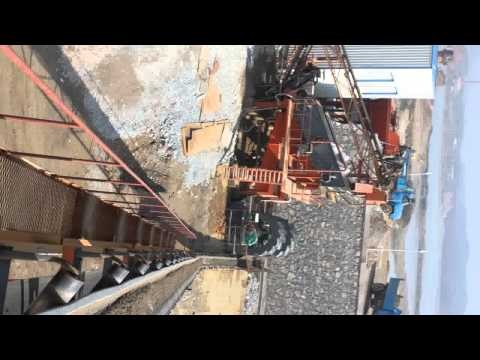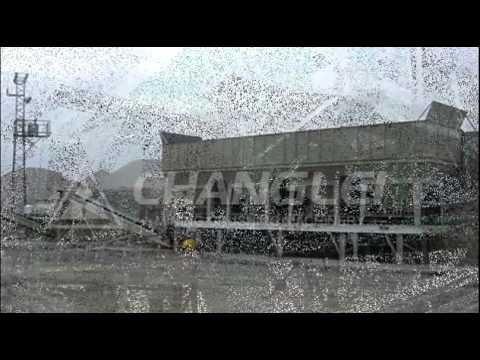Iron ore falls below $US89 to fresh twoyear low
Post on: 19 Июнь, 2015 No Comment

Angus Grigg, Lisa Murray and Max Mason
Dwindling property prices in China threaten to push the price of iron ore even lower as fears grow about the housing outlook in the worlds second largest economy.
The benchmark iron ore for immediate delivery to the port of Tianjin in China fell to a fresh two-year low on Wednesday at $US88.90.
The price of iron ore has now dipped for seven straight sessions, falling a total of 4.8 per cent since last Monday.
China recovery unlikely
Ji Minlei, a trader who operates from the port of Rizhao, told The Australian Financial Review he was concerned about the outlook for the commodity.
Generally people are pessimistic on the outlook for steel demand in the second half. The beginning of the seven-day slump coincides with official data from Chinas National Bureau of Statistics showing the price for new homes fell in July in almost all cities that the government tracks.
It was the third straight month of average new home price declines in China.
Xu Xiangchuan, chief information officer at consulting group Mysteel, said the housing market was hitting demand for iron ore.
The weak demand for iron ore is related to the sluggish property market, he said. The price has also been affected by increased supply from Brazil and Australia. Traders are under pressure to sell down their stockpiles and they have been hurt by the credit tightening.
The fall in the iron ore price came as Chinese consumer confidence deteriorated in August, driven by concerns over the health of the property market, business conditions and employment.
The Westpac MNI China Consumer Sentiment Indicator fell to 113.3 in August, well below its 12-month average of 121.3.
Sentiment about buying a house fell further in August to the lowest level for a year, as consumers reassessed whether it was a good time to purchase a property, the survey found.
Expectations for house prices also fell for a second straight month.
Current business conditions fared even worse in the survey, falling to their lowest level in five years.
Graeme Train, a commodities analyst with Macquarie in Shanghai, said mills and traders were reducing iron ore stocks after a recent run of poor economic data.
From our own checks with steel mills every demand sector apart from infrastructure is now contracting, he said via phone.
He said the demand from the construction and machinery sectors was the weakest, followed by automotive and white goods.
There is some evidence that the weakness in property sales over the first half is starting to catch up [with the steel mills] he said.
Clearly there is more risks [to the price] on the downside than the upside.
And on the way down it could get pretty exciting.
After remaining virtually unchanged during morning trading the Dalian Iron Ore Exchange moved sharply lower after lunch on Wednesday, falling 1.2 per cent to the equivalent of $US88 a tonne. Absent of any policy stimulus from the Chinese government, which is not expected, Deltec chief investment officer Atul Lele said the countrys property sector is unlikely to pick up.
We think that property markets represent a broader risk for the Chinese economy, we think the economy, with the medium and longer term plans that theyve got to transition their economy from fixed asset to consumption are ambitious, Mr Lele said.
We dont think it will be a smooth transition if one is able to be achieved at all.
The commodity has fallen close to 35 per cent this year and is at its cheapest since September 2012 when prices fell as low as $US86.70.
Rather than being an issue of oversupply, which is an ongoing story that is pressuring iron ore, the most recent bout of weakness is more closely correlated to a weak property market in China, Mr Lele said.
The property sector in China has been quite weak, given residential property accounts for about 24 per cent of fixed-asset investment in China, its understandable that weakness in the property sector is feeding through to weakness in the iron ore price, Mr Lele said.

In June, the price of iron ore hit $US89 per tonne, but was then helped by the introduction of target stimulus packages from the Chinese government, however Mr Lele said this time it is unlikely there will be that safety net.
Theres no prospect of stimulus, especially given China has been benefiting from the export upswing over the past few months and the PMI numbers have been relatively good up until the latest HSBC data point, Mr Lele said.
In July, Chinas exports surged 14.5 per cent from a year earlier, well above economist forecasts. Imports contracted 1.6 per cent leaving China with its biggest ever trade surplus, $US50.7 billion.
Its difficult to see policy stimulus being introduced at a monetary level or a fiscal level, given growth in China has genuinely stabilised over the last couple of months.
Australians in trouble
The price of iron ore is now beginning to reach levels where many mid-cap Australian iron ore miners will struggle to break even.
Three miners are already facing an iron ore price below their break-even levels, according to UBS estimates.
Of the Australian miners, Grange Resources and Gindalbie Metals also faces uneconomic production, with break-even prices of $US87 per tonne and $US98 per tonne respectively. Atlas Iron and Arrium are next in the firing line with cash costs over $US80 per tonne. UBS estimates are based on the actual reported grade discount and an exchange rate of US93 in the June quarter.
These companies have to start to reconsider some of their ongoing assumptions with regards to the ongoing viability of their projects because you can dip below an economic price for a couple weeks, but if it starts to go below, then back above, then back below, that makes your capital spending and economics of your project more difficult to assess, Mr Lele said.
With a flood of supply being pumped into the market by the likes of BHP and Rio Tinto, smaller miners with lower quality iron ore face the difficulty of a grade discount on their product, Goldman Sachs analyst Craig Sainsbury said.
The customer has choice at the moment. Its the first time in many years that the customer has had choice because there is a surplus in the market, Mr Sainsbury said.
The bigger miners have done a good job cost-cutting also has its limitations, Mr Sainsbury said.
Miners are trying to cut costs and the big guys have done a pretty good job in terms of reducing costs, but weve still, compared to other parts of the world, got reasonably expensive labour.
The Australian Financial Review














